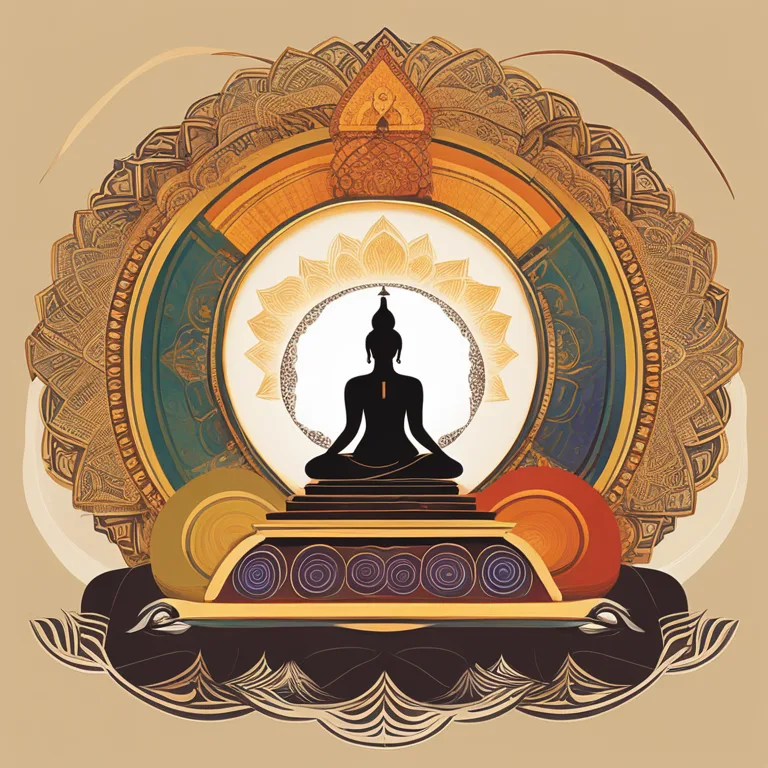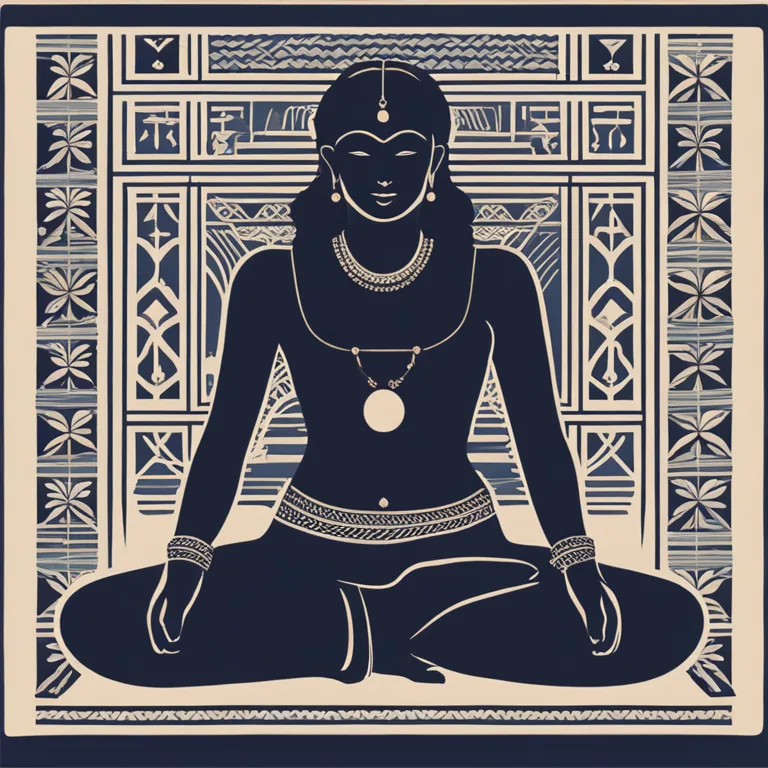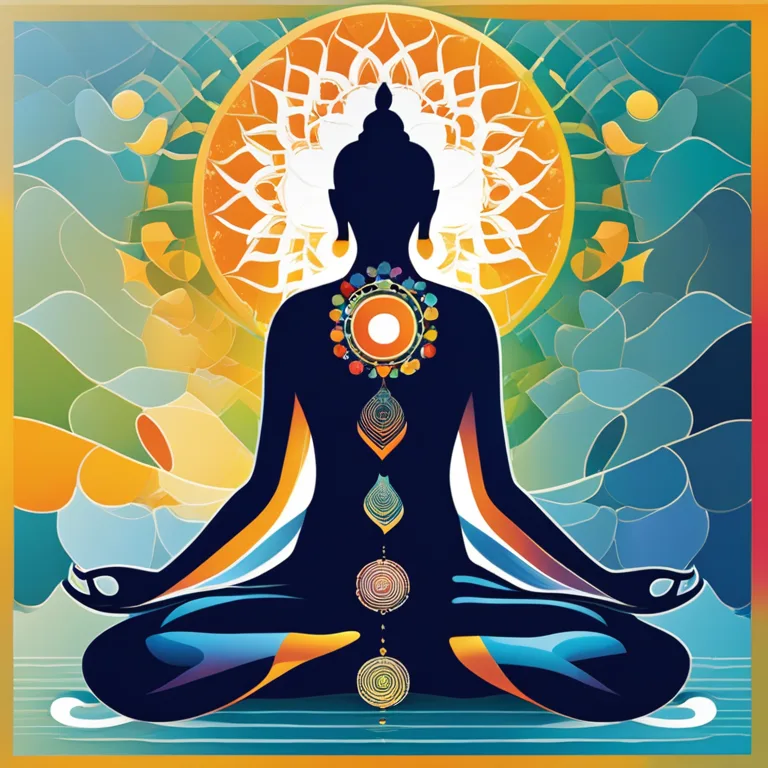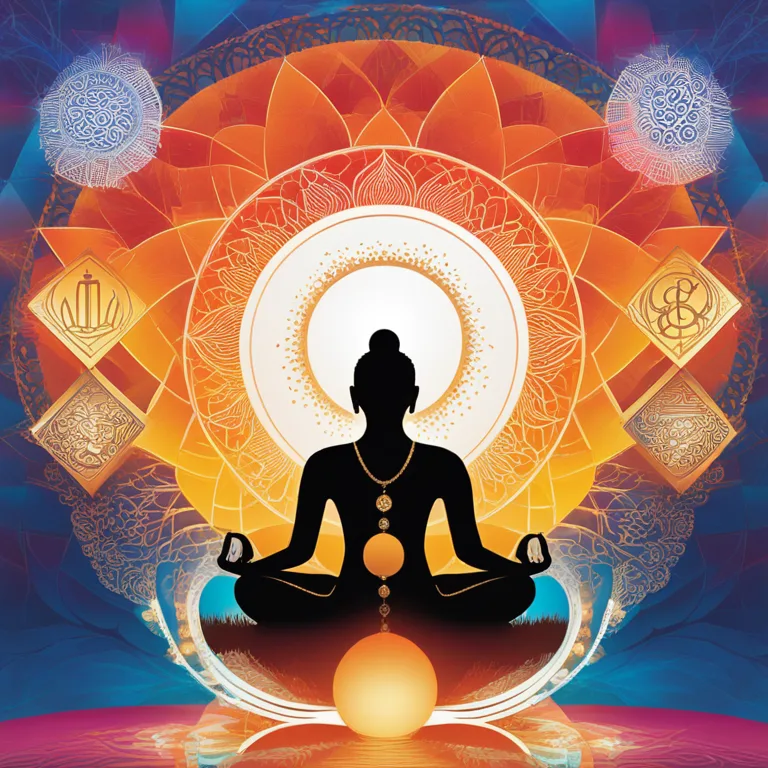
Yoga Philosophy: The Root of Meditation Practices
Discover how the multifaceted techniques of meditation trace their origins back to the ancient wisdom of yoga philosophy.
article by Hina Kurosawa
The Genesis of Meditation in Yoga
Meditation, an ancient practice with myriad forms, has a long-standing relationship with the philosophical teachings of yoga. These teachings, encapsulated in the Yoga Sutras of Patanjali, outline a holistic approach to spiritual development and well-being. The second sutra, "Yogaś citta-vṛtti-nirodhaḥ," meaning "Yoga is the stilling of the fluctuations of the mind," forms the cornerstone of all meditative practices. This profound insight into the nature of the mind and its potential for transformation is what has inspired countless meditation techniques beyond the borders of India, gradually permeating global spiritual and wellbeing practices.

Dhyana: The Pillar of Yoga Meditation
In the eight limbs of Ashtanga Yoga, 'Dhyana' or meditation is described as the seventh limb, succeeding Dharana (concentration) and preceding Samadhi (absorption, or enlightenment). Dhyana involves profound contemplation and an uninterrupted flow of concentration. This state is what many modern meditation practices aim to emulate – whether through focused attention, like on a candle flame or a mantra, or through open monitoring, like in mindfulness meditation. The core concepts of focusing the mind and observing one's thoughts without attachment stem directly from Dhyana's principles.

The Spread of Meditation in Contemporary Times
Today, with a global focus on wellness and self-care, meditation practices have taken on various forms and have been adapted to suit differing needs and environments. Mindfulness, one of the most widely practiced forms of meditation in the Western world, has its roots in Buddhist Vipassana, which in turn shares a common heritage with Yoga. Advances in neuroscientific research in 2024 continue to validate the benefits of these practices, echoing the ancient yogic wisdom about the mind-body connection and the power of meditative practices to enhance well-being.

Integrative and Adaptative Practices
The philosophy of yoga is inherently adaptive, allowing for a confluence of ideas and practices. Thus, diverse meditation techniques like guided visualizations, chakra meditations, or even movement meditations such as Tai Chi and Qigong, can find some resonance with yogic philosophy. These practices embody the yogic pursuit of harmony and balance, though they may not be 'yogic' in the traditional sense. They underline the universality of yoga's core tenets, illustrating how cultures across the globe have developed similar strategies for inner peace and self-realization.

Modern Adaptations and Technological Enhancements
In the age of technology, meditation has also been seamlessly integrated into digital platforms. From apps that facilitate meditation sessions to virtual reality experiences designed to enhance the meditative state, we see a continuous evolution of the practice. These modern adaptations have the potential to assist users in achieving the “stilling of the mind,” a concept straight out of yogic scripture, henceforth confirming the relevance of yoga philosophy even in an age dominated by technology.
The Future of Meditation and Yoga Philosophy
Looking ahead, the interplay between yoga philosophy and meditation is bound to deepen. With rising interest in personal spiritual journeys and the ongoing exploration of consciousness studies, the future may see an even greater synergy between ancient yogic principles and meditation techniques. As we move further into the digital age, the essence of yoga—the quest for unity and the understanding of one's true nature—remains a guiding light for those seeking solace in meditation.
Published: 1/8/2024
Modified: 1/8/2024
More predictions
Come back here soon to learn more about yourself and your future


Meditation Techniques For OCD
Mindful practices to help manage Obsessive-Compulsive Disorder symptoms effectively through meditation.


Meditation Techniques: A Handbook
Discover the breadth of meditation methods to enhance your wellness journey.


Meditation Techniques to Soothe OCD
Discover meditation practices designed to help manage OCD symptoms through mindful awareness and relaxation.